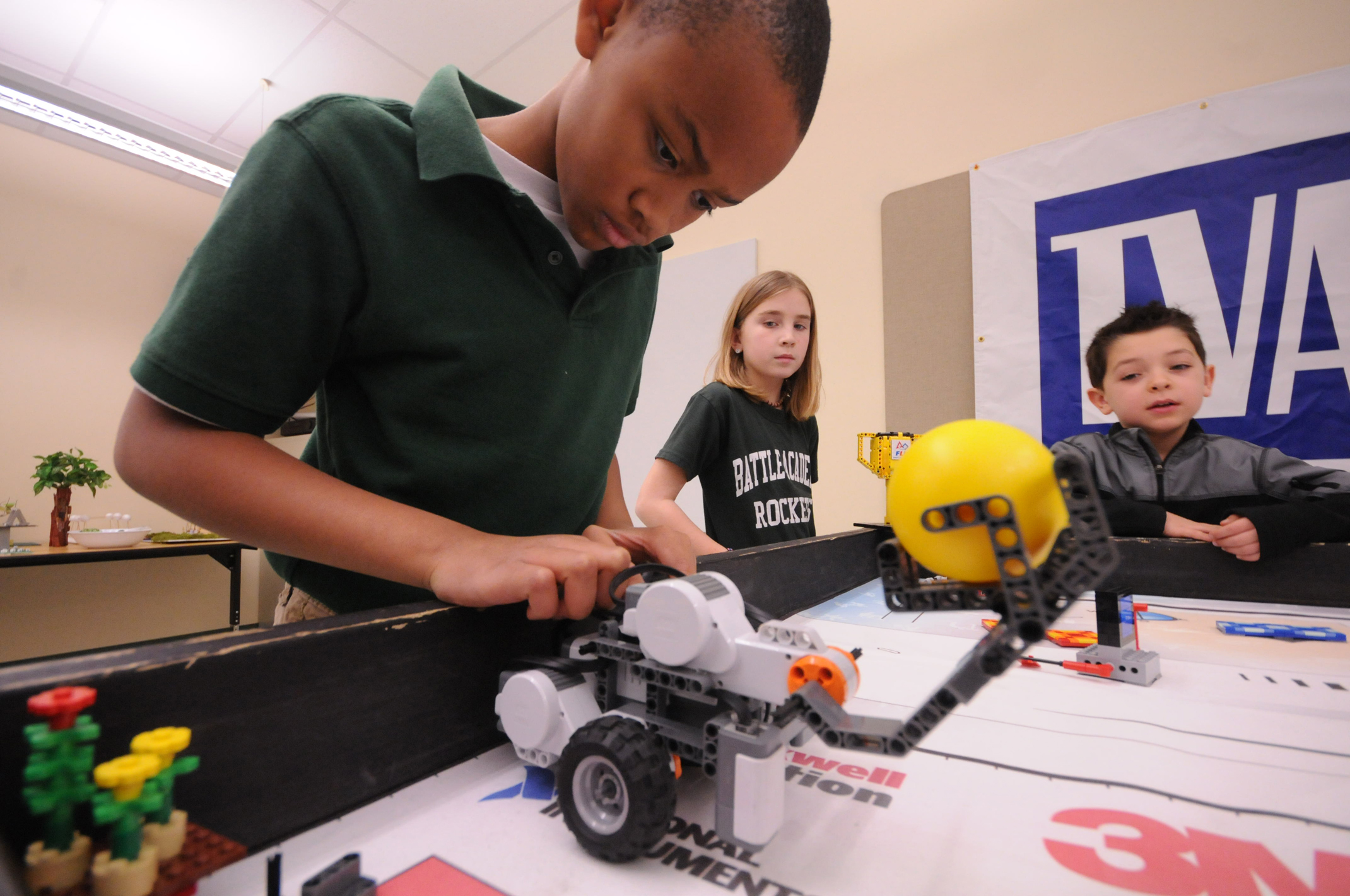Schools using Legos to teach science and math
Friday, January 1, 1904
It looks like any wheeled contraption made of Legos. But it's not.
There's no Harry Potter in the corner, but this moon-rover-looking toy, seemingly with a mind of its own, moves a doll-sized chair into place under a doll-sized table.
Samuel Ellis and Lily Rosenow, both fourth-graders, have used a drag-and-drop computer program to tell two Lego toys atop a table set up like an obstacle course how to solve problems for senior citizens.
To Sam and Lily, it's all supercool child's play.
"If you have normal toys, you don't get to build them," said Sam.
"It's like a puzzle," said Lily.
But to the youngsters' coach -- Lily's dad, Scott Rosenow -- and to Tennessee Valley Authority economist and adviser Charley Spencer, the Lego robots and gameboard represent a serious series of math and science lessons.
Here at Battle Academy for Teaching and Learning, the gamesmanship began a decade ago with about a dozen students. Now the program has grown to include about 500 young people at more than 20 other Hamilton County schools.
It's a locally grown STEM program that came about before the science, technology, engineering and math curriculum was cool.
And it's been funded to the tune of $1.5 million over the past decade by TVA workers -- not ratepayers.
Spencer said he and contributing TVA employees took on the challenge because their work making electricity for 9 million people has taught them that good math and science lessons pay off in an improved workforce. And that means more and better jobs.
"I'm an economist. But being an economist, I understand the value of engineering and science," Spencer said.
Nerdy-Turned Cool
Who would have thought Lego toys would be a match made in the heavens of science, technology and learning?
Engineers and teachers, that's who.
The Lego robots are outfitted with light sensors, tilt sensors, motion sensors. Their speed can be regulated by timers or battery charge or light. Their direction is governed by wheel rotation keyed to any of the above.
But the kids -- even second-graders -- have to work out the directions for the robots to follow. They do this by writing computer programs for the robot and its prescribed tasks in ever-changing games.
Drag and drop software made specifically for student robotics helps, but the youngsters still have to reason out the math behind the movements.
Rolling from point A to point B requires how many wheel rotations? And if a turn takes a stop on one wheel about halfway, how many fewer rotations will that be?
The more complicated each robot's task, the more math and programming are necessary.
Each school's robotics team has a coach who meets with them to work out problems and practice after school once or twice a week.
Building teams
Rosenow said the coursework is far more than math and technology. It's also about team-building, cooperation and group problem-solving.
"Just like work in the community," he said.
So the youngsters also learn hands-on skills about cooperation, patience, communicating skills and team-building.
And they get inspired. Recently some of the teams visited Volkswagen to see how industrial robots work.
As the Chattanooga program's earliest participants have grown up and moved to middle and high schools, TVA workers have raised more money and moved more advanced robotics sets and lessons into three middle schools and now three high schools.
The task-oriented play also helps the students grow in other ways, said Rosenow, who's been a coach for four years.
"You can see how it helps them, and helps equip them for [real-world] changes and challenges," he said.

